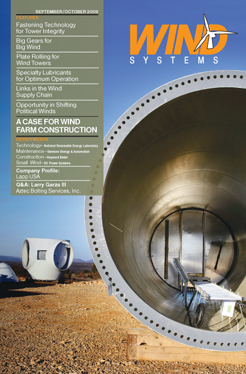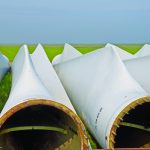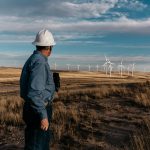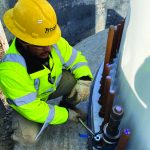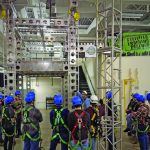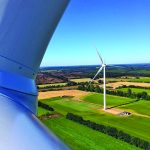There are over 25,000 individual planning commissions in the United States, and each has the potential to promote the adoption of regulations hostile to the growth of distributed generation small wind systems. In order to effectively market home and commercial small wind systems, installers need to understand the entitlement process and be able to guide the end customer through this complex process. This requires the installer to first sell the idea of the project to an emotionally committed buyer and then act as a consultant or agent to that buyer, helping them to navigate the planning and zoning process.
If the system will be installed in a rural area on a large piece of land, the process may be simple, involving an application for a building permit and submission of engineering documents. But in many areas arbitrary height limits require expensive and time-consuming variance or conditional use application permit processes, which act as a deterrent to buyers who are on the fence. By providing the service of completing the applications, preparing for and presenting at planning and zoning, city council, or county commissioners meetings, and arranging interconnections, the small wind firm can significantly increase its chances of winning a particular job. Further possibilities exist in providing financing to end users in the form of loans or lease programs, or by carrying the federal tax incentive grants available to commercial customers for installers to add value and increase the likelihood of closing business. I know of one project where the owners had to fight conflicting planning regulations to win approval for their 6 KW system. They set up a crane and suspended a replica of a rotor from it at the exact height of the proposed hub and photographed it from every conceivable angle, all the way around the property. The 50 foot-tall machine was to power an operating organic farm, and the regulations clearly allowed 60-foot structures as part of the agricultural zoning. The images were provided to the consulting installer, who digitally placed the tower into the images and built them into large format presentation boards. When the final public meeting occurred during which the project was to be approved or denied, the boards were brought out to support the contention that the project would have minimal visual impact on the surrounding homes.
The commissioners were swayed, and the project—which until that point had been on shaky ground due to a poorly written zoning regulation that defined a wind turbine as being not more than 35 feet in height—was granted full approval. Without the work and thought put into securing the needed permission, this project would never have happened. After approval was granted the unit was installed and commissioned within two weeks, and it has been providing clean energy to the farm since. By providing additional service the installer can increase sales, the ratio of sales per proposal, and build better businesses around service before the sale, instead of just after it.
Remember to do the following:
• Check HOA regulations, if they limit installations, check local or state law to see if the restrictions can be trumped.
• Offer services covering initial due diligence, application processing, and public meeting support in addition to financing, installation, and maintenance contracts.
• Call planning authorities early, and call them often. Staff often have the best understanding of what’s needed and how to best win approval for projects.
• Don’t underestimate the amount of time involved; use time efficiently, or turn an opportunity into a potentially big loss.
• Pictures are priceless. Use Photoshop sparingly, though. Make it look real so that it’s more believable.
Drive all the way to the finish line. An emotionally committed customer is critical to the success of a project. Once you find one, work hard to support their vision and the rest will fall into place. Don’t give up easily, and view the installation of a small wind system as a right, not a privilege. Be proactive, and make it happen. By providing a complete solution, you make it easier for the end user to become fully engaged in the project.
















